Scott Hamilton – 22 September, 2015
The Selekarians, as club members dub themselves, industriously mock many of the shibboleths of Tongan culture. ‘Seleka' is an anagram for kasele, a Tongan word for shitting, and club members drink kava out of a toilet. When I called at the Seleka Club in 2013, its members had defaced a Tongan flag with a swastika and had mounted it above the long table where they worked on paintings, drawings, and sculptures.
By the time we arrived the sky was almost dark and fruit bats were squeaking to each other in the mango trees of Lavinia Road. The show, we’d been told, could only be viewed at night.
My son and I climbed the decking at the front of the gallery, and stepped into a passageway of dark cloth that led across boards to a door. Through the door was a room whose walls, floor and ceiling had been covered with brightly painted triangles of cardboard. Blue and yellow were the dominant colours, but shards of green, pink and red flew around the room. Long black shadow-figures travelled across this backdrop, riding bicycles, pursuing black balls, and falling head over heels. In the dim light I noticed my own shadow flaring and stretching, as though it wanted to break free from my body and join the strange melee.
Soon my son had discovered a low, dark opening in a corner of the room, and an abandoned torch. We crawled down the tunnel, which led to a wall. We were about to begin crawling backwards when I noticed the heavy iron latch of a trapdoor attached to the ceiling. I pushed upwards and climbed into a windowless room where black sharks pursued shoals of black fish through oceans of violet paint.
My son fired his torchlight across the little room, and the faces of two teenaged boys flinched into view. The boys held black marker pens; they had been adding to the shoals of names and messages, written in a mixture of Tongan and English, which floated across one of the walls. Mate ma’a Tonga. Everybody think they’re alright. Aware here. Sione Hi. Ita Ha.
My shirt suddenly felt damp, and I understood why we’d only been allowed to visit this place at night. In the heat of a Tongan day, even a Tongan day in June, the undrained air of the little room would have been intolerable.
I led my son back down the tunnel to the blue and yellow room, where we found another passageway - much shorter and, thankfully, much higher - into a large room where hundreds more painted triangles had been attached to every surface. Here the dominant colours were green and pink, and more shadow-figures lurched and flitted across walls. I noticed that many of the panels contained small and simply painted images or abstract motifs, as well as short pieces of text.
A man and woman sat in the corner of the room beside a hurricane lamp, talking quietly. They got to their feet, and the man introduced himself as Adam Douglass, a New Zealand-born, Australian-based artist.
“I feel a bit disoriented” I told Douglass.
“That’s understandable” he replied, smiling sympathetically. “You’re dead.”
I had never been dead before, and my face must have shown my bewilderment, because Douglass hurried to explain my situation to me. “You died when you entered the gallery. That passageway made of black fabric - it’s supposed to simulate the death experience. The rooms you’ve been exploring - they represent a sort of afterlife. When I helped design this show, I was thinking about the Tibetan Book of the Dead, and the way the soul separates from the body, has various adventures. Timothy Leary used the same metaphor in his book The Psychedelic Experience. You’re not dead for good, of course: you can pass back through the tunnel and reenter the world. This is a temporary place, a liberated zone.”
“There are stories about the soul’s journey in Tongan culture” the woman standing beside Douglass explained. “In pre-Christian Tonga, the souls of the dead would fly to Pulotu, a sacred island over the western horizon.”
My eyes were getting used to the dim flickering light, and I recognised Ebonie Maka-Fifita, the director of the On the Spot collective, one of the most energetic and disciplined parts of Nuku’alofa’s arts scene. On the Spot’s members and supporters curate exhibitions, write and stage plays, and organise dance competitions. I was standing in their gallery, looking at an exhibition called Vataulua. Douglass explained that he had visited Tonga last year, and hung out with Maka-Fifita and other artists. This year Melbourne University paid for him to spend two months in Nuku’alofa and work with On the Spot.
Adam Douglass is fascinated by the brain, and by the images the brain can produce when it is pleasured or pressured. He admires the Surrealists’ hand-painted photographs of dreams and nightmares, as well as heretical psychiatrists like Jung and Laing. But where the likes of Dali and Jung were solo explorers, Douglass likes to organise group expeditions to the subconscious. Inspired by the ‘Happenings’ of the 1960s Counterculture and by the art workshops that are part of therapy at some psychiatric hospitals, he has overseen the creation of large-scale artworks by people who do not normally think of themselves as artists. Douglass supplies these new artists with paints and other materials, offers them advice, and encourages them to express themselves. Working alongside one another on murals and installations, the members of his teams can avoid the self-consciousness and self-censorship that solo creation sometimes encourages.
I told Douglass and Maka-Fifita about my adventures in the narrow tunnel, and in the little room above it. “We call it the secret room” Douglass said. “It is a sanctuary within a sanctuary. We left markers there, thinking visitors might be able to say what they can’t say elsewhere. On the night the show opened we declined to advertise its existence. There was no sign. There was no torch. It was discovered by some kids who had come to the show with their parents. A queue soon formed.”
The On the Spot collective shares Douglass’ interest in democratic artmaking. Last year they wrote, produced, and performed a play called Kuonga, which detailed the troubles of Tongan families whose fathers leave the kingdom in search of work and money. Fifita told me about a performance of the play in Ha’apai, the depopulated, cyclone-ravaged archipelago a couple of hundred kilometres north of Nuku’alofa.
“During a scene where the foreign-bound father was saying goodbye to his children, one of the kids in the audience jumped from his seat and shouted ‘Don’t go!’” Maka-Fifita remembered. “He begged the family to stay together.” On the Spot treated the boy’s intervention as a contribution to the play, rather than a disruption. “We wanted to involve the community, to get rid of the barriers between artists and audience” Maka-Fifita explained.
The same desire bred Vataulua. The exhibition’s name is a heteronym that combines the Tongan word for space with ‘taulua’, a word that is used to describe harmonious collaboration. “We advertised painting workshops” Douglass said. “Whoever turned up got to contribute to the exhibition. People chose their own colours, their own subjects and styles”. Douglass and On the Spot decided where individual panels were pasted, and added their own images - the sprawling shadow-figures, for example - to the gallery’s surfaces.
“Those silhouettes were the first things we painted” Douglass explained. “They gave structure. I also tried to create structure, to create an aesthetic system, by painting alongside participants. I tried to balance form and colour. To keep things democratic I mostly painted gradients.”
The workshops became social occasions, as participants gossiped and commented on each other’s paintings. “Sometimes there were disagreements” Douglas said, pointing to a panel where the legend SAFE SEX ALWAYS USE A CONDOM had been painted, and another panel where a penis-canon ejaculated shells. In a country where the public discussion of sex is taboo, both paintings were daring. “One of the older women involved in the project thought the advertisement for condoms was disgraceful” Douglass explained. “She made her own painting, a graceful and restrained abstract composition, as a sort of rebuke to such vulgarity.”
Douglass showed me a panel where the slogan Join Tongan Polisi Tamate (Join the Tongan Police and Kill) had been painted. In recent years two Tongan cops have been charged with murders, and the force has been widely accused of brutality and corruption. In 2006 one of Tonga’s best-known graffiti artists, whose slogans criticised the country’s monarchy and demanded greater freedoms for its people, was picked up the police, charged with treason, and beaten for days. After his release and the state’s abandonment of its case against him, Tevita Latu build a shack in the poor lagoonside suburb of Haveluloto, and made it the headquarters of an art movement he called the Seleka Club. (1)
The Selekarians, as club members dub themselves, industriously mock many of the shibboleths of Tongan culture. ‘Seleka’ is an anagram for kasele, a Tongan word for shitting, and club members drink kava out of a toilet. When I called at the Seleka Club in 2013, its members had defaced a Tongan flag with a swastika and had mounted it above the long table where they worked on paintings, drawings, and sculptures. The old truck that club members used to travel around Tongatapu was covered in psychedelic colours and patterns, and featured slogans like We are the Haua (Outcasts). The Selekarians have become an important part of Nuku’alofa’s art scene, and they contributed dozens of panels, including the satire of Tonga’s police force, to Vataulua.
The headquarters of the Seleka Club sit close to the gates of Vaiola Hospital, where a psychiatrist named Mapa Puloka runs a psychiatric ward. The Selekarians sometimes attend the kava-drinking sessions Dr Mapa organises for his patients, and in 2013 Tevita Latu exhibited a series of paintings inspired by his conversations at the hospital. Dr Mapa encouraged his patients to attend Vataulua workshops, and many of them have created panels for the show.
Most of the Vataulua’s images are simply painted, and most of its texts are easily explicable, but the show’s immersive nature makes it persistently mysterious. Because it surrounds its viewers on all sides and sprawls from room to room, the work can never be surveyed and considered in its entirety. Words and images retreat into shadows, and around corners; colours and shapes flit in corners of the eye, like bright elusive birds. Vataulua seems continually to revise and renew itself.
I wanted to ask Ebonie Maka-Fifita about the relationship between the strange exhibition she was hosting and traditional Tongan visual art. The ngatu, or barkcloth paintings, that have been made in every Tongan village for many centuries feature subdued colours and careful arrangements of a relatively small number of stylised images and abstract motifs. They offer no apparent precedent for the bright colours and idiosyncratic, handpainted images and slogans of Vataulua.
“We did not try to stop anyone using ngatu motifs and colours” Maka-Fifita told me. “But people chose to express themselves in different ways. Ngatu is an artform in crisis. It used to be capable of innovation - during World War Two, for example, when Allied forces were stationed on Tonga, American airplanes began to turn up on barkcloth. Today, though, too many ngatu painters turn out the same old images, in the same old way. Tourists, who like to buy these stereotypical images, are one reason for the problem.”
But if the forms and colours of Vataulua are novel, then the way it was made has many precedents in Tonga. “Tongan culture is full of collective improvisation” Maka-Fifita said. “A lot of our dances are carefully composed, yet offer space for extemporisations by individual performers. Ngatu are usually made collaboratively, with paint and patterns being shared.”
One of the eeriest panels in Vataulua shows a tall, dark figure holding a cross above his head; a woman seems to shrink from the sacred symbol, as though it were a whip or an evil wizard’s wand. Looking at the panel, I thought about recent events in Tonga. At the end of 2014 ‘Akilisi Pohiva, a long-time dissident and leader of the Democratic Party, became Prime Minister against the wishes of most of the kingdom’s elite. A couple of months later Pohiva announced that he wanted to recognise the Convention on the Elimination of all Forms of Discrimination Against Women, or CEDAW, a document that was drawn up by the United Nations and has been signed by almost every country in the world. Clergymen, nobles, and opposition MPs quickly condemned Pohiva’s government as communistic, satanic, and - perhaps worst of all - feminist, and organised a march through downtown Nuku’alofa where slogans like ‘There cannot be two masters in one house!’ were brandished.
A couple of weeks before Vataulua opened, one of the most senior members of Tonga’s state-sanctioned Free Wesleyan Church stood up at a conference of the Tongan Research Association. Dr Ma’afu Palu was supposed to deliver a paper on theology; instead, he issued a call for the overthrow of the Pohiva government. Condemning Pohiva’s support for CEDAW, Palu told his audience that Tongan culture and tradition are incompatible with democracy, and suggested that clergymen, rather than elected representatives of the people, should sit in the kingdom’s parliament.
In the face of the assault on the very notions of tolerance and democracy by powerful Tongans like Ma’afu Palu, the exhibition at On the Spot’s gallery assumes a special importance. Palu and his supporters might claim that democracy is an un-Tongan system and that tolerance of diversity is an un-Tongan quality, but Vataulua shows that they are very wrong. With its hundreds of artists and layers of exchange and dialogue, the work is ineluctably diverse and excitingly democratic. (3)
Scott Hamilton
(1) I described the Seleka Club and its impact on Tongan society in an essay for Overland called ‘Pass the ta’e, please’, which is online at: https://overland.org.au/previous-issues/issue-219/feature-scott-hamilton/ I discussed Tevita Latu’s bold and syncretic painting style in this blog post: http://readingthemaps.blogspot.co.nz/2013/12/why-tevita-latu-is-new-lou-reed.html
(2) I’m indebted to sociologist Michael Horowitz, who lives and teaches in Tonga, for reports on both the anti-feminist march through Nuku’alofa and Ma’afu Palu’s performance at the conference of the Tongan Research Association.
(3) In 2013 I reviewed another exhibition hosted by On the Spot, American artist Sally Richardson’s Fale Koloa, on my blog: http://readingthemaps.blogspot.co.nz/2013/11/the-noble-savage-and-toilet-club.html
Recent Comments
cerian wagstaff
Congratulations to Ebonie Maka-Fifita, Adam Douglass and the On the Spot team - for an uplifting exhibition. The energy that ...
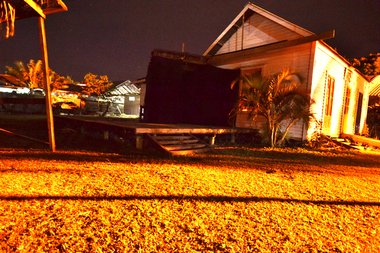
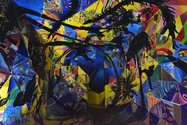
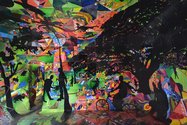

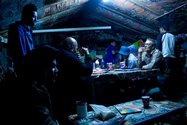

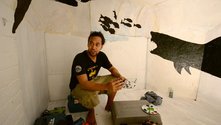
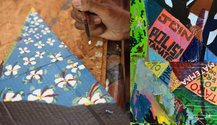

 Two Rooms presents a program of residencies and projects
Two Rooms presents a program of residencies and projects Advertising in this column
Advertising in this column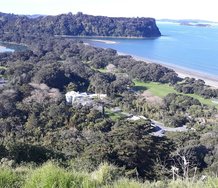
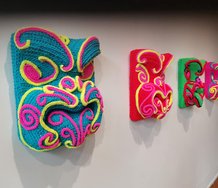

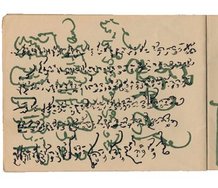
This Discussion has 1 comment.
Comment
cerian wagstaff, 7:21 p.m. 22 September, 2015 #
Congratulations to Ebonie Maka-Fifita, Adam Douglass and the On the Spot team - for an uplifting exhibition. The energy that groups like On the Spot and Seleka bring to the creative arts in Tonga is inspiring - and there are some great artists in Tonga that deserve a wide international audience - and more recognition in that country too. I was lucky enough to see the Vataulua exhibition in Nuku'alofa in August - loved it. Was one of the highlights of my visit to Tonga. Ofa atu to you all, Cerian
Participate
Register to Participate.
Sign in
Sign in to an existing account.